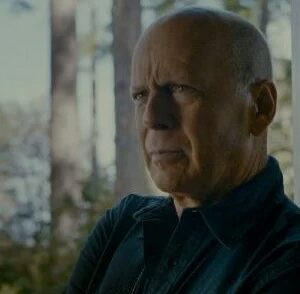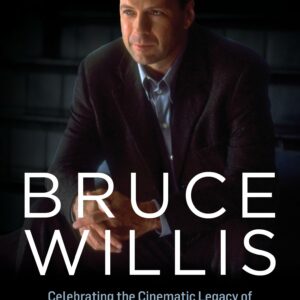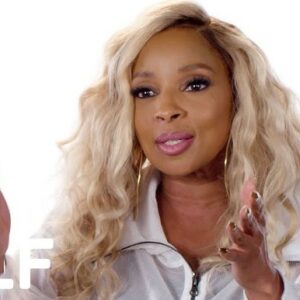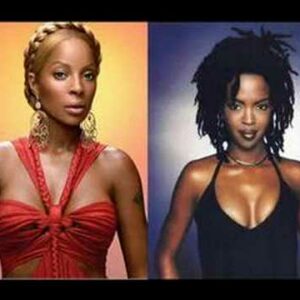Introduction to Tina Turner’s TV Appearances
Tina Turner, often hailed as the “Queen of Rock ‘n’ Roll,” did not simply captivate audiences with her soulful voice, electrifying stage presence, or boundary-pushing performances; she also transformed the world of television through her numerous appearances. With a career spanning decades, Tina Turner’s presence on TV shows—variety specials, award shows, talk shows, and concert broadcasts—helped cement her reputation as one of the greatest entertainers in history. For Turner, television was more than a platform for promotion; it was a canvas where her dynamic artistry could reach millions of homes worldwide.
Television allowed Turner’s brand of high-octane, emotional performances to thrive in an era before social media. Through these broadcasts, fans not only saw the powerhouse performer on stage but also glimpsed her humanity, her resilience, and her endless capacity for reinvention. Turner’s appearances on TV were critical in amplifying her music and persona, bringing her from live concert stages to living rooms around the globe. However, these unforgettable moments were not created by Turner alone. Behind every iconic TV appearance was a team of producers whose vision and collaboration were instrumental in ensuring that Turner’s performances translated seamlessly from stage to screen.
The Critical Role of Producers
Television producers are often the unsung heroes of televised musical performances. In Tina Turner’s case, their role was even more critical, as they needed to capture the essence of her electrifying stage presence within the confines of a television screen. Producers served as the bridge between the performer’s artistic vision and the practical demands of the medium. Their job was to ensure that every light cue, camera angle, and sound bite worked in harmony to amplify Turner’s brand and charisma.
Television has its own set of rules—one that differs significantly from live performance. In the absence of a live audience, Turner’s energy had to be translated for the screen, a task requiring meticulous planning and creative ingenuity. Producers were tasked with deciding how to frame Turner’s performances, ensuring her magnetic movements and vocal prowess could be fully appreciated by viewers at home. They also worked to balance the demands of live television with Turner’s needs as an artist. Whether she was performing a rousing rendition of “Proud Mary” or giving a candid interview, producers helped craft an atmosphere that highlighted her strengths and reinforced her indomitable persona.
The relationship between Turner and her producers was one of mutual respect and understanding. Producers knew they were working with an artist whose reputation was built on a level of energy, dynamism, and professionalism that was second to none. In turn, Turner trusted these producers to not only present her authentically but to elevate her performances by understanding the nuances of both her artistry and the medium of television.
Notable Producers Who Worked with Tina Turner
Over the course of her career, Tina Turner worked with some of the most respected television producers in the industry, many of whom helped shape some of her most memorable TV appearances.
One of Turner’s most iconic television moments came in 1985, when she performed a duet with Mick Jagger at the Live Aid concert. The event, organized by producer and musician Bob Geldof, was televised globally and reached an estimated 1.9 billion viewers. Geldof’s vision for the broadcast was monumental, and the team behind the scenes ensured that the energy of the live performance was conveyed to viewers across the world. The chemistry between Turner and Jagger, combined with the slick production work, created a moment of rock ‘n’ roll history that has been replayed and referenced countless times in the years since.
Then there’s Quincy Jones, who produced many music specials in the 1980s and collaborated with Turner on several occasions. Jones, a legend in his own right, knew how to tap into Turner’s strengths, allowing her to shine in a variety of musical settings. His ability to bring out the best in his artists is well documented, and his work with Turner was no exception. Together, they created magic that was not just musically compelling but visually captivating, demonstrating the synergy between a great producer and a great performer.
Ken Ehrlich, another titan in the world of live television production, is known for producing the Grammy Awards for over 40 years. Ehrlich worked closely with Turner during her various Grammy appearances, most notably during her 2008 performance with Beyoncé. Turner’s collaboration with Ehrlich showcased not only her timelessness as a performer but also the precision and artistry that went into crafting a perfect televised performance.
Creative Decisions and Challenges
Creating an unforgettable Tina Turner television appearance was no easy feat. Producers had to make key creative decisions to ensure that Turner’s stage presence was not lost in translation. Set design, for instance, played a major role in enhancing Turner’s performances. Her live shows were often larger-than-life spectacles with elaborate lighting, pyrotechnics, and energetic backup dancers. Producers had to find a way to recreate this intensity on a smaller, more intimate screen. Whether it was choosing the right camera angles to capture her famous dance moves or selecting close-ups that emphasized the raw emotion of her vocals, every decision was critical.
Music arrangement was another challenge. Turner’s voice was a force of nature, and producers needed to ensure that the television sound captured the full depth and power of her performances. Balancing the mix between her vocals, the band, and any backing tracks required a delicate touch. Some producers chose to experiment with Turner’s arrangements to fit the TV format better, while others stayed true to her live sound, relying on the natural electricity of her performances to carry through.
Timing was a consistent challenge as well. Television, unlike a live concert, is often beholden to strict time limits. Producers had to make difficult decisions about how to fit Turner’s epic performances—sometimes stretching beyond ten minutes—into much shorter television segments. This often meant streamlining setlists or rearranging songs to fit into the confines of a broadcast, all without losing the impact of Turner’s stage persona.
Turner’s image was another consideration. From her distinctive costumes to her signature hairstyle, Turner’s look was as much a part of her brand as her music. Producers had to strike a balance between showcasing her personal style and ensuring that it fit within the framework of a television production. For example, during the 1980s, Turner’s leather miniskirts and wild hair were iconic, and producers worked to ensure that these visual elements popped on camera without overshadowing her vocal performance.
The Legacy of Turner’s TV Appearances
Tina Turner’s television appearances have left an indelible mark on the music industry. Her performances set a standard for how artists can use television to amplify their artistry and reach a broader audience. Today, many artists still draw inspiration from Turner’s approach to television, blending high-energy performances with carefully crafted visuals that appeal to both live and home audiences.
Turner’s collaboration with producers during these television appearances also laid the groundwork for modern artist-producer relationships. In today’s world of music television, producers play a critical role in shaping the public personas of performers. They help create moments that not only showcase the artists’ talents but also define their careers. Just as Turner’s producers worked to present her in the best possible light, modern producers are tasked with crafting televised performances that will resonate with audiences long after the show has ended.
The influence of Turner’s televised performances is also evident in the growing trend of artist collaborations with television producers to create more immersive experiences. Today’s music shows are increasingly pushing the boundaries of what can be done on screen, and much of this innovation can be traced back to the groundbreaking work that producers did with Turner in the 1970s and 1980s.
Conclusion
Tina Turner’s television appearances were not just performances—they were events. These moments were crafted with the care and precision of the producers who worked tirelessly to ensure that her energy, emotion, and undeniable talent were captured in a way that would resonate with audiences around the world. Whether it was through creative set designs, expert music arrangements, or perfectly timed camera work, producers played a pivotal role in shaping Turner’s televised legacy.
As new generations of artists take to the stage and screen, Turner’s influence remains palpable. Her TV performances, meticulously crafted in collaboration with visionary producers, continue to inspire musicians and producers alike. The art of televised performance has evolved, but the bar set by Turner and her producers will forever be a touchstone for those looking to make their mark in the world of music television.





